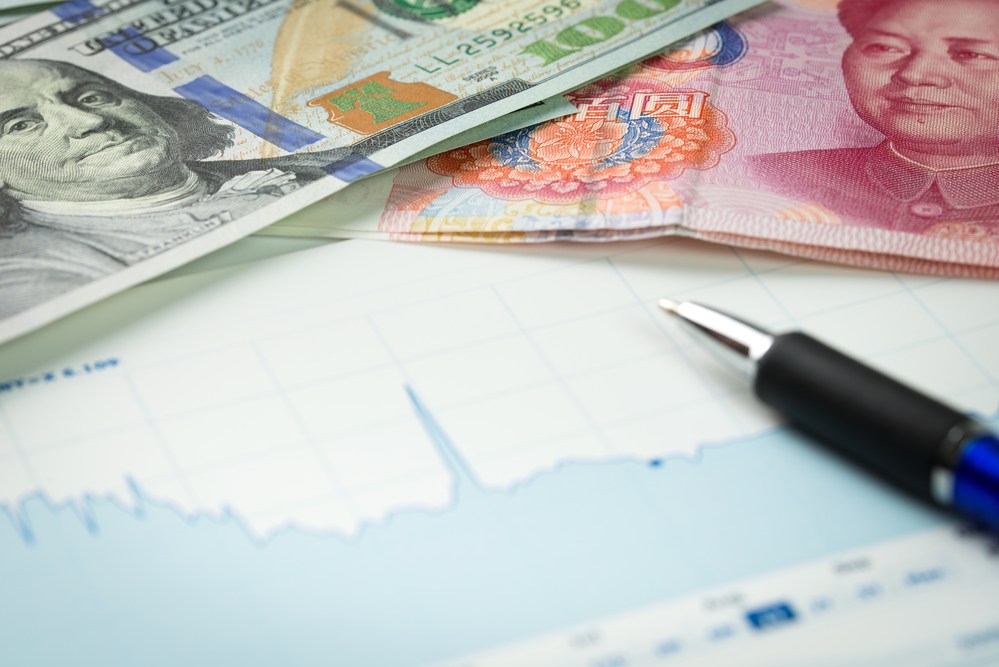
There have been restless movements in the North American stock markets since the US-China trade war began in 2018. This as been a regular occurrence with the non-stop exchange of tirades between the United States and China.
Many investors and traders are not sure how to proceed, how to plan their market strategy. Is the current landscape in the geopolitical relations worth the risk? Will there be a real resolution anytime soon between the world’s two largest economies?
Let’s look out how developments and unpredictabilities in the geopolitical relations of the world’s two largest economies are creating a push-and-pull effect on North American stocks.
September 2019 tariffs
The US imposed tariffs on $125 billion worth of Chinese goods on Sept. 1. Specifically, the Trump administration placed 15 percent tariffs on goods such as shoes, smartwatches, and televisions among others. It will rise to 25 percent for $250 billion worth of Chinese goods which will take effect on Oct. 1.
In response, China imposed extra tariffs of 10 percent and 5 percent on US imports worth $75 billion. The first round of levies took effect on Sept. 1 while the rest will be in place on Dec. 15.
This development was unfortunate as North American stocks have started performing on the uptrend in the weeks prior. In Canada, the TSX posted a triple-digit gain largely delivered by the country’s energy sector. US stocks gained much more.
Everyone was jubilant since the North American markets plunged in mid-August as the US and China were at each other again with their exchange of heated threats. Eleven major sectors of the TSK closed lower at that time.
The week was not good for the agricultural sector, oil and gas, and transportation, in particular. Most affected was the automotive sector. Trump had even demanded US companies to get their operations out of China.
There are still plans to increase the tariff to 30 percent on China imports worth $250 billion.
There were losers on the TSX but loonie seemed to win
Canada’s energy and materials sectors, along with nine other major sectors, dragged Canada’s main stock index down in the week before the G20 Summit in Japan. For example, shares of the Canadian Natural Resources were down 3.8 percent as well as shares of Crescent Point Energy Corp. by 3.6 percent.
Centerra Gold Inc., showed the weakest gains as gold ended its six-year high. The August gold contract declined by $3.40, resulting in a price of $1,412 an ounce. At the same time, the September copper contract climbed 0.1 cents at $.72 per pound.
“We know that commodities represent a large percentage of the TSX and as a result of the weakness in that sector you’re seeing the TSX not participating in the celebrations that the U.S. market is seeing,” said Kash Pashootan, CEO and chief investment officer at First Avenue Investment Counsel Inc., ahead of the world leaders’ assembly in Japan.
The S&P/TSX composite index was down by 4.49 points during the market’s closing. Even so, the loonie was on its four-month high as the possibility of rate cuts loomed over the U.S. dollar.
Optimism is high among American stocks
Meanwhile, American investors and traders seemed to know something their Canadian counterparts don’t. Ahead of the G20, the S&P 500 and Dow Jones Industrial Average were roaring to their all-time highs. The S&P 500 was up 0.4 percent while the Dow Jones Industrial Average was up 0.2 percent. The NASDAQ composite was equally on a winning streak, climbing 0.2 percent.
If the movements would continue, the US indices would be on its best months since 2015. Interestingly though, the US dollar index was trading lower that week.

No end in sight for US-China trade war
On July 1, the news was out that Trump and Chinese President Xi Jinping agreed to resume trade talks. The two leaders also decided to hold off new tariffs after their discussion at the sidelines of the G20 Summit. While the tariffs already imposed will remain in effect, additional tariffs that both parties are planning will not be implemented at least for the time being.
Most significant decisions that came out of the meeting was that Trump allowed the U.S. tech firms, such as Google and Qualcomm, to sell to Huawei once again. At the same time, Xi allowed China to export from American farmers and other agricultural suppliers again.
The TSX hadn’t reacted with the positive news yet while other markets had started soaring hours after the news. The optimism was particularly high among the Asian stocks.
A cycle of trade talks and tariffs
There had already been 11 similar trade talks that took place among American and Chinese negotiators. And yet still, the situation escalated to a point where there has been a 25 percent tariff on $250 billion in Chinese imports and vice versa. There had also been two-three instances where the two leaders of the world’s largest economies have expressed agreement and resolution only to change their minds after.
Furthermore, the allegations where the rift was based on are not something that could smoothen out that easy. The US has yet to withdraw its claims that China is stealing technology from them and that the Asian powerhouse has a way on compelling American firms operating in the country to hand in their trade secrets. The Trump administration had also not yet withdrawn its statement saying that Huawei poses a national security threat.
In the end, unless there is an actual offering of the olive branch between these two spatting countries, there is no end in sight for the US-China trade war.
(Featured image by DepositPhotos)
